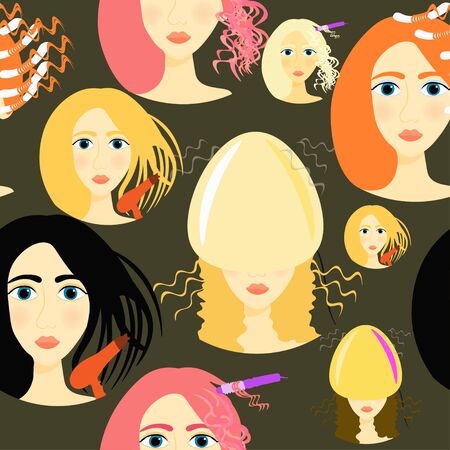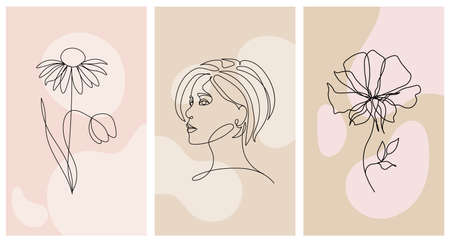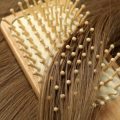Understanding Hair Damage: The British Perspective
When it comes to choosing the best hair treatments for damaged hair, understanding the root causes is essential—especially in the UK, where our unique environment presents its own set of challenges. British weather is famously unpredictable, with frequent rain, gusty winds, and sudden temperature changes all taking their toll on your hair’s health. Add to that the issue of hard water—which is prevalent in many UK regions—and daily styling habits like blow-drying or straightening, and it’s easy to see why damage can quickly accumulate.
| Common Cause | How It Damages Hair |
|---|---|
| Weather (Rain, Wind, Humidity) | Leads to frizz, dryness, and breakage due to constant moisture shifts. |
| Hard Water | Mineral build-up makes hair feel rough, dull, and more prone to tangling. |
| Daily Styling (Heat Tools) | High temperatures weaken hair structure, causing split ends and brittleness. |
Many Brits also face hair issues from regular exposure to central heating in winter and strong UV rays during rare sunny spells. Recognising these uniquely British factors is the first step towards finding an effective solution that truly works for you. In this guide, we’ll explore how to select targeted treatments that address these very challenges—so you can keep your hair looking healthy and sharp, whatever the UK throws at you.
2. Identifying Your Hair Type and Needs
Before investing in hair treatments, it’s crucial to understand your hair type and its unique requirements—especially in the UK, where weather swings from damp drizzle to dry central heating can wreak havoc on your barnet. British hair comes in all forms, from classic curls reminiscent of a London fog to finer, flyaway strands typical of blustery coastal towns. Assessing your hair properly will help you select treatments that actually work for you rather than against you.
How to Assess Your Hair Type
Start by looking at the thickness of individual strands, overall density, and natural texture. Here’s a handy table to help you identify where your locks fit:
| Hair Type | Description | Common Concerns (UK context) |
|---|---|---|
| Fine | Thin, prone to limpness | Easily weighed down, lacks volume |
| Medium | Neither thin nor thick; balanced feel | May get frizzy in humidity |
| Thick/Coarse | Full-bodied, often feels heavy | Prone to dryness, can be unruly in wind |
| Curl/Wave | S-shaped waves or ringlets | Frizz-prone, needs more moisture |
Why It Matters for Damaged Hair
The right treatment depends not only on damage level but also on your hair’s structure. For example, protein-rich products suit fine or chemically damaged hair but might make thicker or curly hair feel brittle. Likewise, rich moisture masks are a lifesaver for curly and coarse types but could leave fine hair flat. Understanding these nuances will ensure you don’t end up buying a product that makes things worse.
Top Tip: British Weather & Hair Needs
If you live up north where it’s wetter, anti-humidity serums can keep frizz at bay. In drier southern climates or during winter with indoor heating, opt for deep hydrating masks once a week. Assess your environment as much as your hair type—it’s all part of the British grooming game.

3. Key Ingredients in UK-Focused Treatments
When it comes to choosing the best hair treatments for damaged hair in the UK, understanding the key ingredients is crucial. The British climate—often damp and unpredictable—can take its toll on your hair, so it’s important to look for treatments that contain ingredients specifically suited to local conditions. Here are some essential components commonly found in popular UK hair products:
Natural Oils
Natural oils are a staple in many British hair treatments, providing moisture and protection against frizz caused by humidity and rain. Some of the most effective include:
| Oil Type | Main Benefits | Best For |
|---|---|---|
| Argan Oil | Deep hydration, shine, repairs split ends | All hair types, especially dry or coloured hair |
| Coconut Oil | Nourishment, reduces protein loss, strengthens strands | Curly and coarse hair |
| Jojoba Oil | Mimics scalp’s natural oils, non-greasy moisturiser | Sensitive scalps and fine hair |
Proteins
Protein-based treatments are particularly beneficial for strengthening weak or chemically treated hair. Look out for these proteins in your chosen product:
- Keratins: Helps rebuild the hair’s structure, smooths and strengthens.
- Wheat Protein: Adds volume and thickness without weighing hair down.
UK-Specific Natural Extracts
Treatments that incorporate locally sourced botanical extracts can offer added benefits. For example:
- Nettle Extract: Known for promoting scalp health and reducing dandruff.
- Camelia Oil: Lightweight nourishment popular in premium UK brands.
Choosing Climate-Appropriate Ingredients
The best treatments balance these ingredients to suit the moist British weather—think lightweight yet deeply nourishing formulas that won’t leave your hair limp or greasy. Always check the ingredient list before buying, and consider your individual needs based on your typical daily routine and exposure to environmental factors.
4. Top Professional and High Street Solutions
When it comes to restoring damaged hair, the UK offers a brilliant mix of professional salon treatments and tried-and-true high street products. Whether you fancy a splurge at your local salon or prefer popping into Boots or Superdrug for something more budget-friendly, there’s plenty to choose from. Let’s break down some of the best options available on both ends of the spectrum.
Salon-Quality Treatments
Salons across the UK are well-equipped with advanced treatments that tackle everything from colour damage to dry, brittle hair. Olaplex, for example, has become a buzzword in many London salons thanks to its patented bond-building technology. Kerastase Fusio-Dose is another popular choice, offering tailor-made solutions depending on your specific hair needs. These professional treatments often come with the benefit of expert application and immediate results, but they do tend to be pricier.
High Street Heroes
If you’re after convenience without compromising on quality, classic British high street brands have stepped up their game. From deep conditioning masks to leave-in sprays, these products are designed for everyday use and are perfect for those who want effective care on a budget.
Comparison Table: Salon vs High Street Options
| Treatment Type | Popular Brands | Price Range (Approx.) | Main Benefits |
|---|---|---|---|
| Salon-Quality | Olaplex, Kerastase, Redken | £20 – £60 per session | Professional application, instant results, tailored formulas |
| High Street | Tresemme, John Frieda, Aussie, Charles Worthington | £5 – £15 per product | Affordable, easy to use at home, widely available |
Local Favourites & Where to Buy
You can find most high street solutions at retailers like Boots, Superdrug, or even supermarkets such as Sainsbury’s and Tesco. For salon treatments, check if your local hairdresser stocks premium ranges—many offer express services if you’re short on time. Ultimately, mixing occasional salon visits with regular at-home care using reputable high street brands is a winning combo for most blokes looking to keep their barnet in top nick.
5. DIY and Home Remedies with a British Twist
If you’re looking to revive damaged hair without splashing out on expensive salon treatments, there are plenty of home remedies that draw on traditional British know-how. Many ingredients found in the average UK kitchen or larder can be surprisingly effective for restoring hair health. Here’s how you can give your hair some TLC with a uniquely British spin.
Classic British Ingredients for Hair Care
The UK is known for its simple yet effective household staples. Think of products like tea, honey, eggs, and even oats — all of which can be used in homemade hair treatments. Below, I’ve pulled together a table of common British kitchen items and their benefits for damaged hair:
| Ingredient | How to Use | Hair Benefits |
|---|---|---|
| Yorkshire Tea (black tea) | Brew strong, cool, and use as a final rinse | Adds shine, reduces breakage |
| Honey | Mix with olive oil and apply as a mask | Hydrates and smooths frizz |
| Eggs | Whisk with a little water, apply for 10-15 mins | Repairs protein loss and strengthens strands |
| Oats | Grind into powder, mix with water to form paste | Soothes scalp and adds moisture |
A Simple DIY Routine for Damaged Hair
Step 1: Yorkshire Tea Rinse
Brew two bags of classic Yorkshire tea in a litre of boiling water, let it cool, then pour over freshly washed hair as a final rinse. This old-school trick helps boost shine and strengthen brittle ends.
Step 2: Honey & Olive Oil Mask
Mix two tablespoons of runny honey with one tablespoon of extra virgin olive oil. Warm slightly, apply to damp hair, pop on a shower cap (or even cling film if you’re feeling resourceful), and leave for 30 minutes before rinsing thoroughly.
Step 3: Egg Treatment (Once a Fortnight)
If your hair is particularly dry or breaking, try an egg mask. Beat one egg with a splash of cold water, massage into your scalp and lengths, leave on for 10-15 minutes (avoid hot water when rinsing to prevent scrambling!), then shampoo as usual.
British Tips for Everyday Hair Health
- Avoid overwashing — the British climate often means less sweating, so washing every 2-3 days is usually sufficient.
- Popping on a woolly hat? Always tuck long hair inside to reduce friction damage from rough fibres.
- If you’re partial to pub gardens or seaside walks, use a lightweight scarf to protect your hair from wind and drizzle.
Final Thoughts
You don’t need fancy products to get great results — sometimes the best hair treatments are already hiding in your cupboard. Give these traditional British remedies a go; they’re wallet-friendly and perfect for those who appreciate the comforts of homegrown solutions.
6. Building Your Own Haircare Routine
Creating a haircare routine that suits the UK’s unique climate and busy lifestyle can make a world of difference for damaged hair. From sudden rain showers to hectic weekday mornings, here’s how you can craft a simple yet effective plan tailored for British living.
Step-by-Step Guide to an Everyday Haircare Routine
| Step | Product Type | UK Lifestyle Tip |
|---|---|---|
| 1. Cleansing | Gentle, sulphate-free shampoo | Helps combat hard water effects and keeps scalp healthy despite unpredictable weather |
| 2. Conditioning | Nourishing conditioner with hydrating ingredients | Essential after exposure to cold winds or rain; focus on mid-lengths and ends |
| 3. Weekly Treatment | Deep conditioning mask or oil treatment | Best done on Sunday evenings—a classic British wind-down ritual |
| 4. Heat Protection | Spray or serum for heat styling | If you’re dashing out to work or the gym, shield your hair from both hairdryer and weather damage |
Rainy Day Recovery Tips
- Tuck a travel-sized leave-in conditioner or anti-frizz spray in your bag for quick touch-ups after being caught in the rain.
- Avoid over-brushing wet hair; use a wide-tooth comb instead to prevent breakage.
Easy Weekday Fixes for Damaged Hair
- If time’s tight, opt for overnight leave-in treatments—wake up with softer, more manageable hair.
- Braids or buns are not just stylish but also protect against further weather-related damage during commutes.
Your Personalised Routine Matters
No two heads of hair are the same—especially with the UK’s mix of city life, countryside escapes, and moody weather. Try different products and tweak your routine until you find what works best for your daily rhythm and hair type. Consistency is key: stick to your regime and your hair will thank you, come rain or shine.


